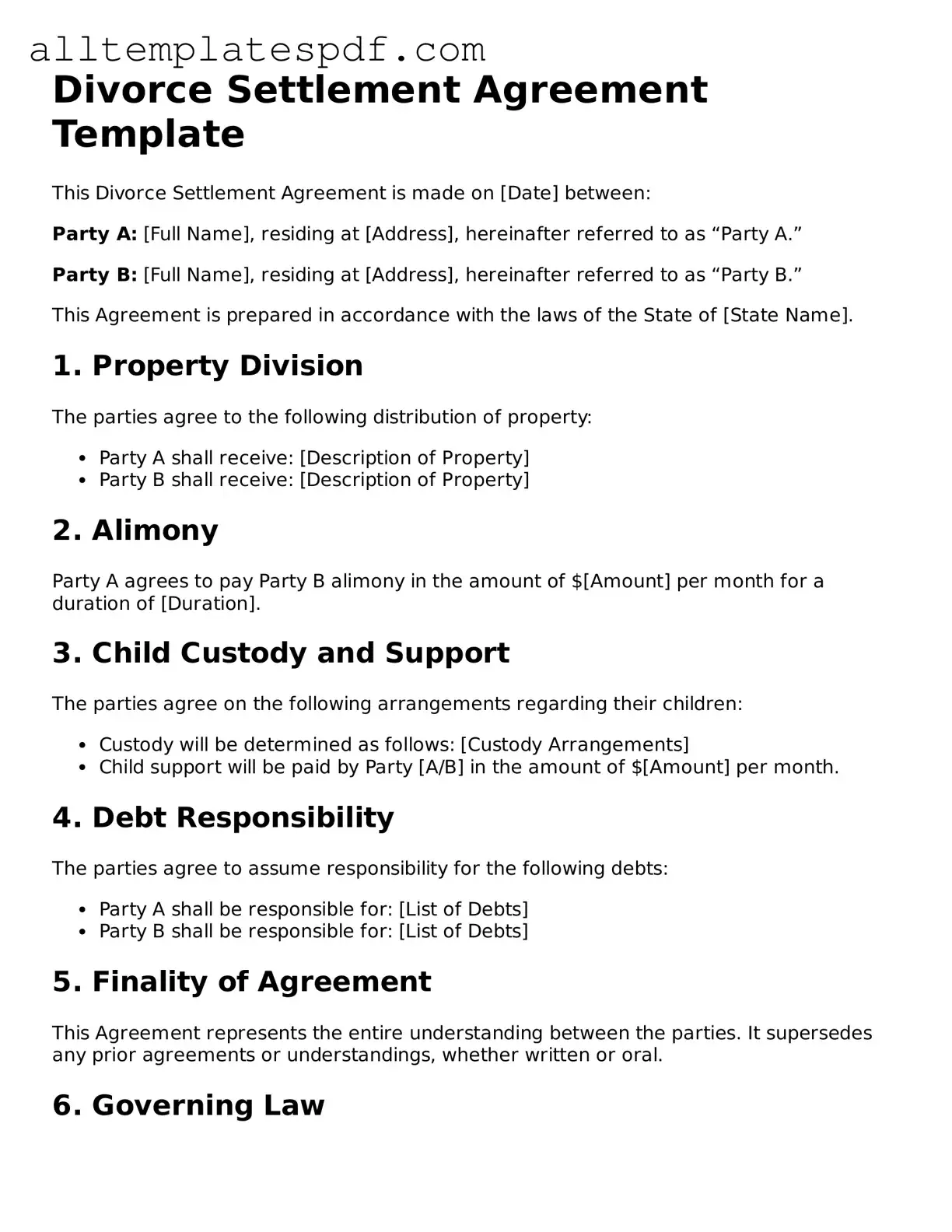Filling out a Divorce Settlement Agreement form can be a daunting task, and many individuals make mistakes that could affect their future. One common error is not fully understanding the terms of the agreement. It’s crucial to read and comprehend each section, as misunderstandings can lead to disputes later on. Many people rush through this process, assuming they know what everything means, which can result in unintended consequences.
Another frequent mistake is failing to disclose all assets and liabilities. Honesty is vital in these agreements. If one party hides assets or does not fully disclose debts, it can lead to serious legal repercussions down the line. Both parties should provide a complete picture of their financial situation to ensure a fair settlement.
People often underestimate the importance of addressing child custody and support issues comprehensively. Leaving these sections vague can lead to confusion and conflict in the future. It’s essential to outline clear arrangements for custody, visitation, and financial support to avoid misunderstandings that could affect the children involved.
Some individuals neglect to consider tax implications when dividing assets. For example, certain assets may have tax liabilities that could impact their overall value. Not accounting for these factors can lead to unexpected financial burdens after the divorce is finalized. Consulting with a financial advisor can provide clarity on how to approach asset division wisely.
Additionally, many individuals fail to update their estate plans after finalizing a divorce. This oversight can lead to unintended beneficiaries or complications regarding inheritance. It’s crucial to revisit wills, trusts, and other estate documents to reflect the new circumstances following the divorce.
Lastly, some people do not seek legal advice when filling out the Divorce Settlement Agreement form. While it may seem straightforward, having a legal professional review the document can help identify potential issues and ensure that both parties’ rights are protected. Legal guidance can provide peace of mind and contribute to a smoother transition into post-divorce life.
